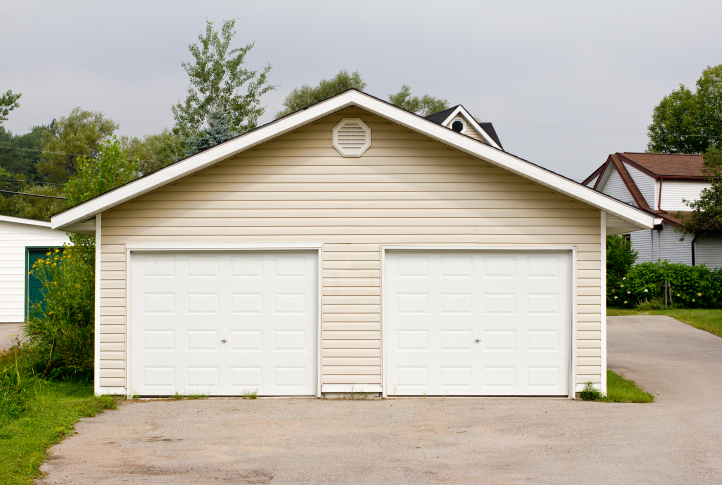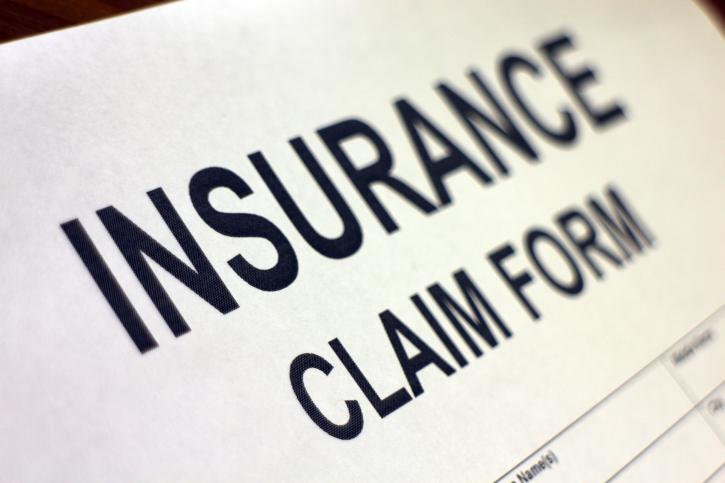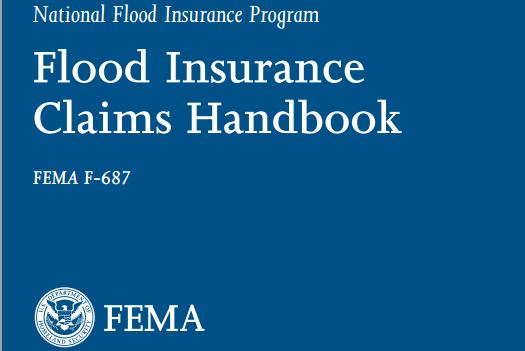Filing a claim after a flood may become a hassle forpolicyholders and can delay claim settlement if it’s not clearwhat’s covered by a standard Flood insurance policy, as well as theexclusions and limitations.
|What homeowners do in the first 24 hours after a storm is alsocrucial to a smooth and satisfactory claims process.
|Aon National Flood Services Vice Presidentof Claims Terry Black and Director of Claims Examination DuanePaulson agree that insurance agents can help their clients achievea fast and smooth claims process by following the following simplesteps.
|Related: 6 tips for safely cleaning up household hazardouswaste after a storm
|
(Photo: Szepy/Thinkstock)
|1. Know thepolicy
|Agents should know what’s covered under the client’s policy andwhat’s not, and should be able to explain the coverage thoroughlyto their clients. “It is important for people to know andunderstand some of the major limitations or exclusions involvedaround basements and enclosures,” Paulson said.
|Review policy for accuracy
|Agents and policyholders must make sure that they have thecorrect information before they start the claim. Sometimeshomeowners have issues that delay the claim later on, such asincorrect-named insureds on the policy or a revision of certaindetail. For example, an insured who passed away, got marriedand added a spouse, or has a new mortgage company.
|“The one we see most often is that people change mortgages a lotor their mortgages are sold from one to the other, so that’ssomething that can easily change for the policy holder,” Paulsonsaid. “At claim settlement time, it’s very important that we havethe correct mortgagee information or payee information.”
|Know the coverages, exclusion and limitations
|Agents must know the coverages, including the exclusions andlimitations of the standard flood insurance policy. Paulson sayssome of the biggest areas for exclusions and limitations would bearound basement and enclosures below elevated buildings. “There canbe limited coverage in those areas, so it’s important that agentsknow, understand and can discuss those with policyholders, if theyask.” Both the insurance company’s adjuster and the independentadjuster are well-versed on coverages and can also answerquestions. In addition, agents can reach out to the insurancecompany for specifics.
|
(Photo: Les Palenik/Thinkstock)
|2. Understand flood limitations andexclusions
|Flood insurance policies only cover one building. Even if thereare multiple buildings on the same property, a separate policy isneeded for each building. A potential exception would be thedetached garage that does not have unoccupied living space used forbusiness or farming purposes.
|There are two types of Flood insurance policies, which arepurchased separately. The building coverage, which has itsown deductible and covers the building components, and thepersonal property coverage, which also has its owndeductible, but covers the personal properties located inside thatbuilding, or inside another building on that property, but doesn’tcover items that are outside. Both policies are subject toexclusions.
|Related: Why don’t property owners have Floodinsurance?
|The limitations and exclusions that apply to basementsand elevated buildings can sometimes be confusing forpolicyholders. Coverage for the basement area is limited to anumber of items stated in the policy. Homeowners should know thatif they “have a house that is elevated and they have an enclosureunderneath that elevated floor, there are some stipulations,”Paulson addeed.
|Basements and flood debris
|The coverages that apply to basements are limited mostly tobuilding mechanical systems, and cover things such as furnaces,water heaters and circuit breakers, but will not cover thefinishing. “If you have a finished basement, it won’t cover carpetor personal property items, such as couches and items stored inboxes. Knowing up front makes homeowners better prepared to dealwith the losses afterwards. It will also help them in their thoughtpath when deciding what they really want to store in the basementor how much they want to finish off the basement,” Paulsonsaid.
|Items or debris that end up on the policyholder’s property arenot covered under the standard Flood insurance policy, so theinsurance company will not pay to remove them completely. They willonly pay to remove debris from the property to facilitate repairs.“For example, if a boat washes up against the property, theinsurance company will pay to remove that debris off the buildingto make repairs. It doesn’t remove the boat and take it away,”Paulson said. The policy refers to debris in or under the building,“so if a piece of the building floated away, they will pay forthat,” he added.
|Tenants should apply for renters’ insurance as personal propertyin rental units are not covered under the building owner’s policy.Without that flood coverage, their contents are not covered underthe standard Flood insurance policy.
|
(Photo: Sanjagrujic/Thinkstock)
|3. Know the three types ofpolicy forms
|Although there is only one standard Flood insurance policy,there are three forms: The Dwelling form, which covers standard home;the General Property form, which covers commercialbuildings; and the Residential Condominium Building AssociationPolicy (RCBAP) form, which covers residential condominiumsowned by an association. Base coverage is the same for all three,but they all differ slightly from each other. Cars, automobiles andairplanes are not covered under Flood insurance policy.
|“Flood insurance basically covers the building structure and thecontents within that building structure with some exceptions.Sometimes there are coverages for garages and places of thatnature,” Black said.
|Each form has some variations, Paulson said.
- The Dwelling form covers the dwelling if thepolicyholder has building coverage, but there is potential for someof that coverage to be applied to a detached garage, under certaincircumstances.
- Under a General Property form, the coverage is onlyfor the insured building. It doesn’t cover any peripheralbuildings or personal property in any peripheral building.
- The RCBAP form covers only the building insured and noother buildings or personal property in those buildings. Buildingcoverage could potentially cover a detached garage, while personalproperty coverage covers personal property located in any buildingon that particular property, subject to exclusions andlimitations.
In dealing with the Flood insurance, additional item lossesaren’t really covered, Black said. The insurancecompany won’t address loss or damage of items not coveredunder the policy. Policyholders can, however, benefit from advancepayments of up to 50% of the amount that they believe the claimwill incur. “They will have to sign a document stating that theyunderstand that if the claim doesn’t actually cover that amount,that money would have to be paid back,” he added, “but it allowsthem to have money in their hand immediately.” The initial paymentis based on the estimate included in the documentation available atthe time the payment is made. “That causes a lot of confusion,”Black added, “and that’s where a lot of third-party adjusters comein."
|Policyholders can take the initial payment for the undisputedamounts, but there still is the opportunity for them to provide theinsurance company with additional documentation as they becomeavailable. For example, “If the policyholder was filing a claim andfound additional damage," Paulson said, “Let’s say they tear outthe vinyl flooring and there is damage that wasn’t seen in thefoundation that’s a potential for having additional coverage. Justbecause they have received a check or some cash doesn’t mean thatthey cannot pursue further claims under that policy, as long asit’s documented and covered under the policy.”
|Related: 8tips for cleaining up after a flood

(Photo: Moodboard/Thinkstock)
|4. Get flood-relatedtraining
|“Agents have to get all the training they can get on the floodto really help their policyholders,” Black said. “FEMA offersregular trainingseminars and continuingeducation” courses that agents can attend.
|The Federal Emergency Management Agency (FEMA) provides links toInstitutes that offer training, including agent workshops and Associate in National Flood Insurance (ANFI). TheANFI allows agents to earn a designation that reinforces thetechnical and practical knowledge and skills required to handle allaspects of Flood insurance coverage with confidence andaccuracy.
|(Photo: Federal Emergency Management Agency)
|5. Provide policyholderswith the necessary resources
|To ensure that their clients follow the process through andreceive the best benefits from their policy, agents can alsoprovide them with resources that will give them information on howto properly file a claim, such as the FEMA Claims Handbook. Agents should always haveone in their possession so they can easily reproduce it for theirpolicyholders. It is also in the policy and the adjuster shouldgive one to the policyholder as well. “It’s a touch point for theagents, to allow them to provide service and answer questions forthe policyholders,” Black said.
|
(Photo: AntonioGuillem/Thinkstock)
|6. Reach out toclients
|Paulson says it is very important for agents to reach out topolicyholders after a storm, especially if they have clients livingin certain areas that are affected by the flood, whom agents havenot heard from.
|7. Follow up
|Agents should follow up regularly on the progress of theirclients’ claim, and the recovery process. This will help agentsretain those clients in the future. “It is just as important for anagent to be able to help the policyholder and to verify certainimportant information up front, such as changes in mortgages andpayees,” said Paulson. “The sooner they get the ball rolling ongetting those things corrected, the better, and there will be lessdelay for the policyholder in conclusion of the claim.”
|8. Have a plan and beprepared
|There’s potential for agents who live in the same area in whichtheir policyholders are located to have their businessinterrupted. In the event they too are affected by the flood,agents must have a plan to be able to effectively service thosepolicyholders. “They should basically have a catastrophe plan todeal with that,” Paulson said. "Agents should plan ahead of timehow they would deal with clients if they themselves are affected bythe flood."
|
(Photo: Hailshadow/Thinkstock)
|9. Ensure proper filing ofclaim
|Policyholders must work with the assigned adjuster, and“depending on the severity of damage and what is being claimed,they most likely will be retaining the services of a contractor whocan assist them with estimates and comparing and contrasting,”Paulson added.
|It is best for homeowners to meet with the adjuster beforediscarding anything. Store the damaged items and try to get the wetmaterial out of the home, as soon as possible. Make a pile outsideor put items in a garage or a separate area. Take photographs anddocument those items, just in case they are scavenged or picked upby the city. “Sometimes depending on the severity of the flood,lots of times [city workers] go through the affected areas withbulldozers to pick up the discarded items and that may take placebefore the adjuster has a chance to look at it,” Paulson said.
|The more documentation that a policyholder has, the better. Takepictures of the documents, as well as the serial numbers and modelnumbers of major items, for instance, furnaces or freezers. Recordeverything and prepare an inventory of the items.
|
(Photo: Norbert Sobolewski/Thinkstock)
|10. Encourage clientsto:
|File claims immediately
|Homeowners should contact their agents and insurance companyimmediately after a flood to start filing their claims. “The soonerhomeowners get their claim in, the better,” Paulson said. Once thecompany is notified, an adjuster will be dispatched to the site tobegin evaluating the loss and to see damages first-hand. “This willlead to quicker resolution of the claim,” Black added.
|Dry out and clean affected areas
|Homeowners should start drying and cleaning out the affectedareas immediately after a flood.
|
(Photo: P. Harman/PropertyCasualty360.com)
|The first 24 hours are critical in reporting claims and thecleaning and drying out process is very important. Agents shouldadvise their clients to store the items they plan to throw out,especially personal property. They should be kept somewhere safe orput in a pile, if possible, for the adjuster to see and document.Additionally, Paulson says “a good best practice for policyholderswould be to take photographs of the damaged property as they’removing it out or moving it into the pile, make a list and preparean inventory of those items that they’re going to be claiming undertheir policy.”
|Retain proof
|“Most Homeowner's policies encourage owners to do a completeinventory of what they have in their house. The same thing can bedone ahead of time to prepare for a flood. Knowing that inventoryand having it listed some place, makes it easy to go back and lookat it,” Black said.
|Be cautious of what they sign
|“Policyholders should consult with their agent to let them knowthey’re available for an adjuster to come out. After a major stormthere are all kinds of organizations moving into the area andsometimes misinforming the policyholder as far as what’s paid forand what’s not,” Black said. “I would not encourage policyholdersto sign contracts with anybody until they fully understand whattheir financial responsibilities are going to be.” Policyholdersshould “be careful of what they sign as far as contracts.”
|The policyholder sometimes thinks that the insurance companywill work with the contractor or retain someone to do the work, butall construction contracts are between the policyholder and thecontractor. “The company under the Flood policy does not pay thecontractor directly. All contractual agreements are between thepolicyholder and the contractor,” Paulson said.
|Get an independent adjuster, if necessary
|Homeowners sometimes hire independent adjusters, as many didafter Hurricane Sandy. These adjusters basically act asrepresentatives for the policyholders. The insurance company’sadjuster will work with the homeowner’s representative to settlethe claim. The adjusters will visit the site to take photographs,take measurements, do a scope of the damages, as they see them, andprepare an estimate based on coverages and the limitations andexclusions included in the policy.
|Related: Find the best flood insurance to prepare for theunexpected
Want to continue reading?
Become a Free PropertyCasualty360 Digital Reader
Your access to unlimited PropertyCasualty360 content isn’t changing.
Once you are an ALM digital member, you’ll receive:
- All PropertyCasualty360.com news coverage, best practices, and in-depth analysis.
- Educational webcasts, resources from industry leaders, and informative newsletters.
- Other award-winning websites including BenefitsPRO.com and ThinkAdvisor.com.
Already have an account? Sign In
© 2024 ALM Global, LLC, All Rights Reserved. Request academic re-use from www.copyright.com. All other uses, submit a request to [email protected]. For more information visit Asset & Logo Licensing.









